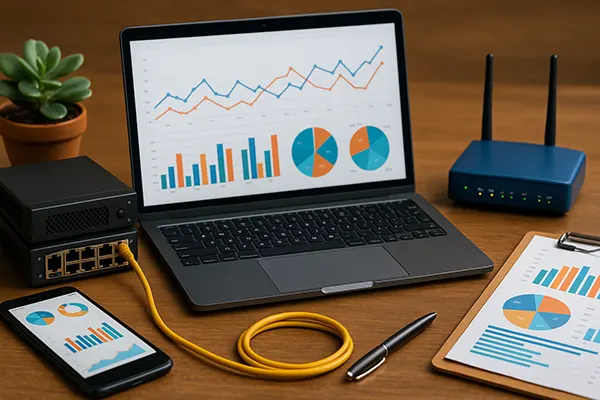
How to Adapt CPA Marketing to a Cookieless Environment in 2025: Tracking Without Third-Party Cookies
As of mid-2025, most mainstream browsers—including Google Chrome, Mozilla Firefox, and Safari—have either restricted or fully eliminated the use of third-party cookies. For CPA marketers, this represents a turning point: the very tools that once underpinned tracking and conversion attribution are disappearing. With traditional tracking mechanisms being phased out, adapting to a cookieless world is not optional—it’s necessary for survival and growth in affiliate marketing.
Understanding the Tools: Server-Side Tracking, API Conversions, and First-Party Data
Server-side tracking has become one of the primary solutions replacing cookie-based methods. Unlike client-side tracking, where data is collected via the user’s browser, server-side tracking allows data to be sent directly from the advertiser’s server to the affiliate network’s system. This reduces reliance on browsers and improves data control and reliability.
API conversions, particularly through services like Facebook’s Conversions API or TikTok Events API, allow advertisers to send conversion data directly to ad platforms. These APIs enable real-time tracking without the need for browser-based scripts, aligning well with privacy-focused standards and improving data security.
Meanwhile, first-party data—information collected directly from users through owned domains—has become the gold standard. Whether it’s an email, a user ID, or a behaviour log on-site, leveraging this data legally and transparently is now a cornerstone for sustainable CPA campaign success.
Advantages of a First-Party Strategy in Tracking
First-party strategies enable longer data retention and more accurate attribution models. Since the data is collected directly by the advertiser or publisher, it reduces the risk of information loss due to browser-level tracking restrictions.
They also increase control over compliance with privacy regulations, such as GDPR or the ePrivacy Directive. This not only strengthens user trust but also lowers the risk of penalties related to improper tracking.
Finally, this model encourages better audience segmentation. With refined control over how data is gathered and stored, advertisers can create personalised campaigns based on user behaviour and lifecycle, which enhances CPA outcomes.
Practical Applications on Major Ad Channels: Facebook, TikTok, Google Ads
Facebook’s Conversions API (CAPI) is perhaps the most discussed example in this transition. It allows advertisers to maintain conversion tracking accuracy even without browser cookies. Integrating CAPI with CRM systems or event managers helps bridge the gap in attribution left by blocked third-party cookies.
TikTok offers similar server-based integration through its Events API. It enables advertisers to send conversion events and attribution signals directly from their servers. This model is not only more secure but also improves accuracy, especially on mobile devices where cookie tracking is already limited.
Google Ads has pushed forward its Enhanced Conversions and Consent Mode features. Enhanced Conversions use hashed first-party data to attribute conversions, while Consent Mode dynamically adjusts tracking depending on user consent, ensuring compliance while maintaining performance data.
Challenges and Implementation Issues Across Channels
One challenge lies in aligning server data with real-time user activity. Delays or misconfigurations can result in missed conversions or duplicated data, which harms performance analytics.
Moreover, technical integration often requires developer involvement. For small CPA marketers, this can pose a resource constraint, especially when managing multiple campaigns across various channels.
Finally, each ad platform has specific API rules and authentication methods, which means custom implementations for Facebook, TikTok, and Google are necessary, increasing operational complexity.

Evaluating the Benefits and Limitations of Cookieless CPA Approaches
Cookieless solutions are more aligned with today’s privacy regulations and user expectations. They provide more durable tracking by relying on first-party data and server communications rather than fragile browser cookies, which can be deleted, blocked, or restricted without notice.
Another key benefit is data transparency. Server-side and API-based approaches offer marketers deeper insights into user behaviour without breaching ethical or legal boundaries. These systems also minimise dependency on third-party vendors and improve data ownership.
However, the limitations cannot be ignored. Server-side tracking can be costly to implement and maintain. It requires reliable backend infrastructure and precise configuration. Additionally, data freshness and synchronisation issues can occasionally disrupt attribution accuracy.
Is a Cookieless Future Sustainable for CPA Networks?
Yes, but with conditions. CPA networks must evolve their backend systems to accept server-to-server (S2S) events and encourage publishers to move toward more durable identifiers, such as hashed email or universal user IDs.
Networks also need to invest in better documentation and onboarding tools for publishers and advertisers. Simplifying integration with APIs and creating pre-built connectors for popular platforms can drastically reduce friction and speed up adoption.
Ultimately, networks that embrace transparency, offer robust technical support, and educate their users on privacy-respecting tracking will not only survive the cookieless shift—they will lead the new era of affiliate marketing.
